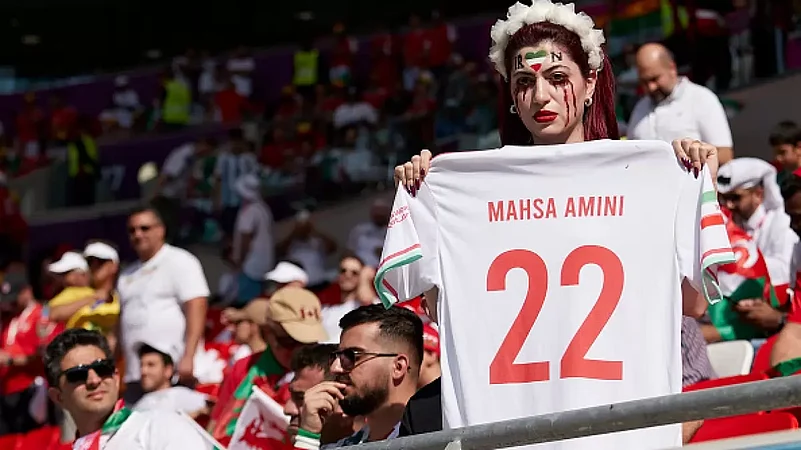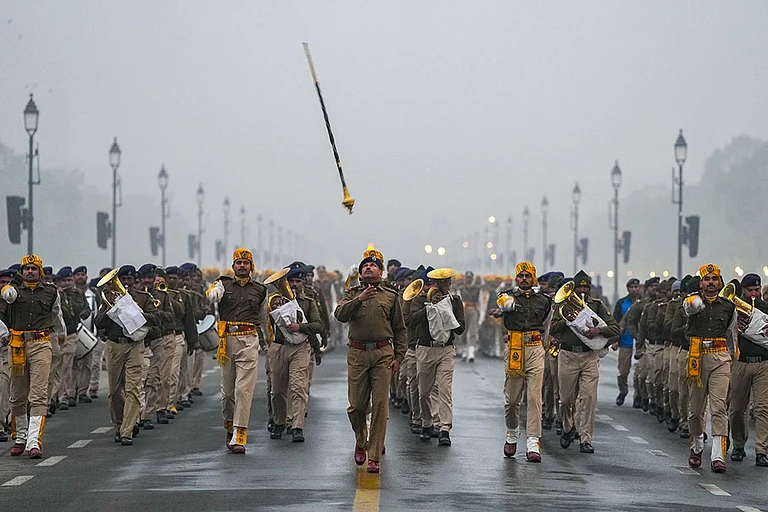Bertrand Russell once said, war does not determine who is right - only who is left. The 21st century is witnessing a geopolitical-cum-cultural war. The clamours of which were also echoed outside Khalifa International Stadium ahead of Iran’s first 2022 World Cup match against England.
The ongoing protests in Iran are about the repression of the people, especially women, their chastisement, and the ideological echo chambers of the anti-people Khamenei regime. ‘Jin, Jiyan, Azadi’ (Woman, Life, Freedom) is the popular cultural motto getting louder, reaching millions of people via social media and other mediums. This rallying cry of the Kurdish has now become the voice of the new world order. Iran of the 1980s is trying its best to fit into the new ‘progressivism’ template. This cultural dissonance has created a gulf; today’s Iran wants to break free of ‘classical conditioning’ and aspires to attain freedom from the dictated definitions of modesty. The evolutionary ideals for women are the major cause of this upheaval, predominantly led by Iranian women.
The authoritarian regime lords over Iranians, dominating almost all aspects of their lives — mandatory hijab being one such prompt. Mahsa (Jina) Amini’s death propelled a series of protests, poking the last embers whilst igniting hatred for the oppressive clerics’ regime. It soon turned into civil unrest when people from various quarters joined the protesters’ clamours. e cultural assimilation of the Kurds also inspired Iranian women to take the reins of this 21st-century liberation movement into their own hands. Nevertheless, Khamenei attempted to kill two birds with one stone - suppressing the protests and silencing the Kurds. The Treaty of Sèvres in 1920, provided for an autonomous Kurdistan but it was never ratified. When the Treaty of Lausanne replaced the Treaty of Sèvres in 1923, it had no mention of Kurdistan. Thus, Kurds were left as people of nowhere.
Seering discontent
The now-popular Jin, Jiyan, Azadi calls also holler for an overthrow of the regime and the death of Iran’s supreme leader Ayatollah Ali Khamenei. Protests erupted across Iran since mid-September after the death of Amini, a 22-year-old Kurdish from Iran’s Kurdistan province. Amini was arrested by Iran’s religious morality police in Tehran for not adhering to a stipulated modest code of conduct. Looking back at the 1979 Iranian revolution, when Ayatollah Ruhollah Khomeini himself made a call to the Iranian women to come out on the streets against Shah Reza Pahlavi, this change in rhetoric raises a pertinent question — Do the ideals of feminity somewhere constrain women as a being? The man in a black cloak delineates the social constructs that eventually define how women in the Islamic Republic should behave.
For the West and other parts of the world, it sounds like playing with the idea of women as the second sex. This revulsion reached the boiling point with the semi-theocratic regime’s brazen denial of Amini’s death in custody. The UN figures show around 14,000 people were arrested in connection with the protests. Despite a despicable record of atrocities by the regime, one common thread that unifies the commoners across the globe still remains intact— music. Songs of blood and revolution are what’s keeping the protesters undaunted. They are creating beats out of these trying times, the agitation is embellished with coarse words of protest. Iran sees women as state subjects and those who skirt trouble are punished. Whipping, executions and torture are some of the means to deal with the purported cultural degradation.

Songs of blood and revolution
Adding melody to their malady, music has taken the centre stage to express solidarity and highlight the plight of Iranian civilians. A Persian version of the popular Italian protest folksong Bella Ciao by Iranian sisters Samin and Behin Bolouri manifests the agony of a ‘forced code of conduct.’ A striking feature of the music is the melody — the common hymn of solidarity and empathy that unifies us all for a cause. It transliterates with the same vehemence.
This is the power of music— a seamless dimension. History shows how often this seamless dimension is banned or even attacked by the extremists, be it in Western Asia or other Islamic Republics. Considering the ‘modesty template’ for women that Iran endorses, the black cloak clerics and the West should rather ask themselves—Is it only about raising our own feminist consciousness or does it also pertain to society as a whole? The answers might differ depending on the political spectrums. Since the demonstrations in Iran also seek to change the status quo by pushing back against cultural and political codes of conduct; this duality is bound to have lasting consequences for all. Women cutting their hair and doffing their hijabs in Iran brought a fresh wave of agitation against Khamenei.
More and more protesters are unafraid to brandish their newly-acquired symbolism. The overarching influence of songs of blood and revolution is what’s unifying their call for freedom. What compels people to unite through music are the common chords of communication. Their resilience and faith take precedence over other forms of fears and anxieties — they are not alone in feeling this dissent against certain injustices. Where language as a tool of thought fails, music comes in.
From ‘Keep the home fires burning’, ‘It's a long way to Tipperary’ to Vietnam War hit ‘We Gotta Get Out of This Place’, protest music has a long history. Marjane Satrapi’s ‘Persepolis’ stands one among all as a masterpiece. The graphic novel blew up western misconceptions about Iranian history and its people. Imagination, art and music are free-flowing identities; these don’t necessarily require phonemes and morphemes. Music is the lone wolf of emotions. This is why it is feared, and detested by the extremists. But will Iran witness another white revolution that will eventually help push the governing clerics to the margins? With the West and Iran debating over the progressivism template, it is the clamouring Iranians’ songs of blood and resistance that will decide the future of the semi-theocratic republic.

























